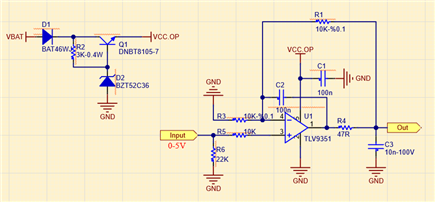Other Parts Discussed in Thread: TLV9354
Hi everyone,
The circuit I have built is a very simple amplifier. I am having problems during the BCI test (60mA). Although the input signal is stable, I see peak signals at the output.
I verify that the input signal is not changing. The problem is affected by the amplifier.
I tested for situations where C2 is used and not used, the result has not changed.

How can I solve this problem?
BR,
Onur.

